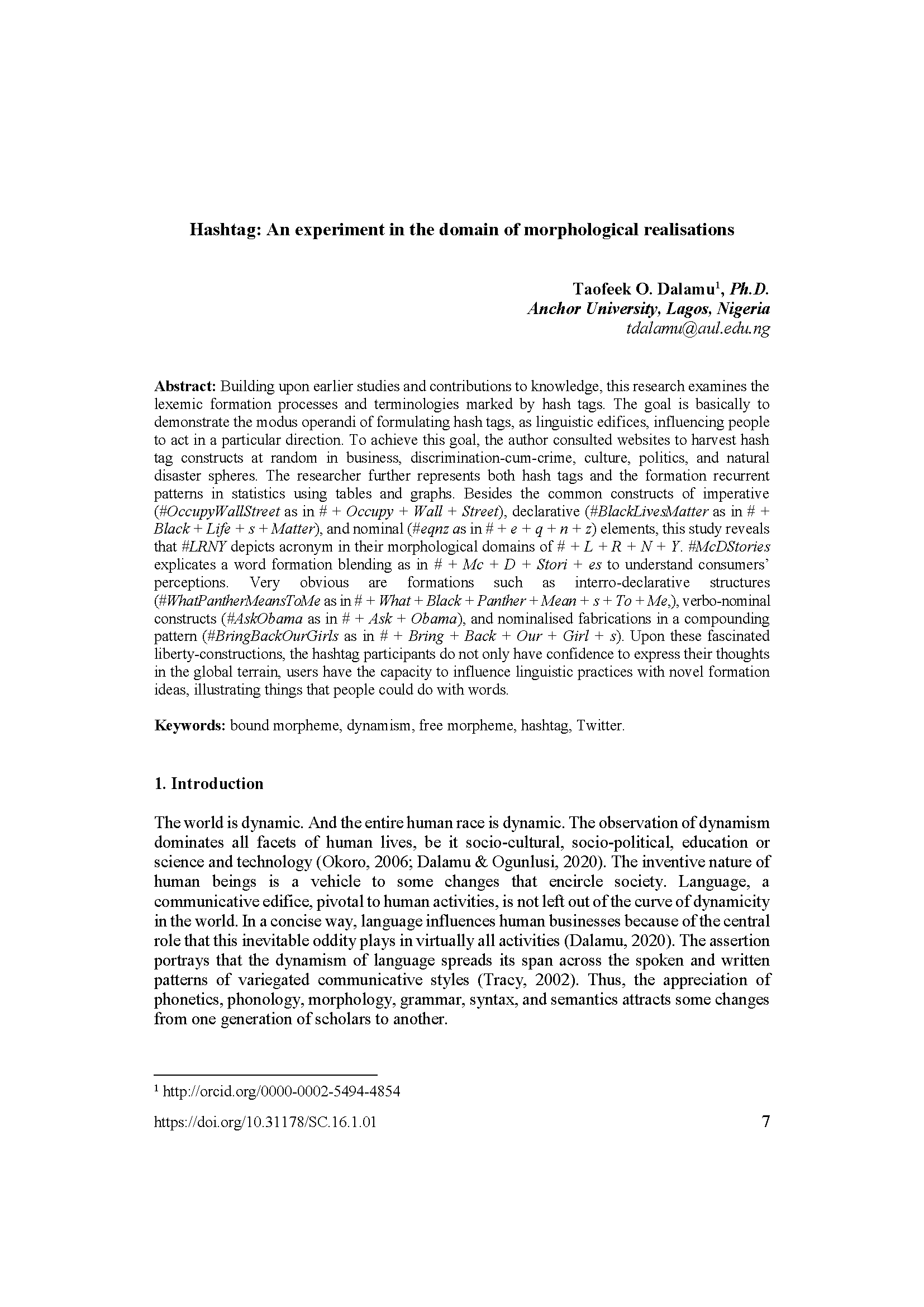Hashtag: An experiment in the domain of morphological realisations
DOI:
https://doi.org/10.31178/SC.16.1.01Keywords:
bound morpheme, dynamism, free morpheme, hashtag, TwitterAbstract
Building upon earlier studies and contributions to knowledge, this research examines the lexemic formation processes and terminologies marked by hash tags. The goal is basically to demonstrate the modus operandi of formulating hash tags, as linguistic edifices, influencing people to act in a particular direction. To achieve this goal, the author consulted websites to harvest hash tag constructs at random in business, discrimination-cum-crime, culture, politics, and natural disaster spheres. The researcher further represents both hash tags and the formation recurrent patterns in statistics using tables and graphs. Besides the common constructs of imperative (#OccupyWallStreet as in # + Occupy + Wall + Street), declarative (#BlackLivesMatter as in # + Black + Life + s + Matter), and nominal (#eqnz as in # + e + q + n + z) elements, this study reveals that #LRNY depicts acronym in their morphological domains of # + L + R + N + Y. #McDStories explicates a word formation blending as in # + Mc + D + Stori + es to understand consumers’ perceptions. Very obvious are formations such as interro-declarative structures (#WhatPantherMeansToMe as in # + What + Black + Panther + Mean + s + To + Me,), verbo-nominal constructs (#AskObama as in # + Ask + Obama), and nominalised fabrications in a compounding pattern (#BringBackOurGirls as in # + Bring + Back + Our + Girl + s). Upon these fascinated liberty-constructions, the hashtag participants do not only have confidence to express their thoughts in the global terrain, users have the capacity to influence linguistic practices with novel formation ideas, illustrating things that people could do with words.





